Abundance: plentiful
What: leaves, flowers, seedpods, tubers
How: salad, seasoning
Where: shady undergrowth
When: spring, summer, fall, winter
Nutritional Value: Vitamins A & C
Dangers: Contains some oxalic acid, limit consumption to a handful per day.
Medicinal Summary
Leaves, Flowers, Stems - fever reducer; diuretic; relieves indigestion (tisane, tincture)
Wood sorrel (Oxalis crassipes)

Another picture of wood sorrel (Oxalis crassipes)
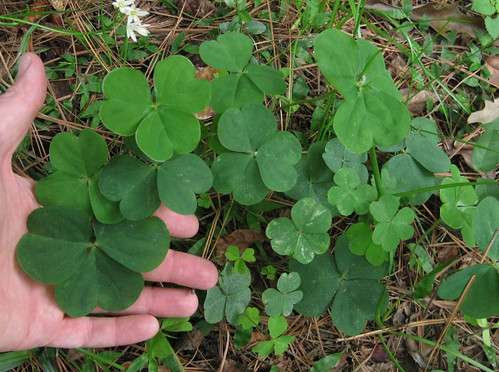
Close-ups of wood sorrel flower (Oxalis crassipes).
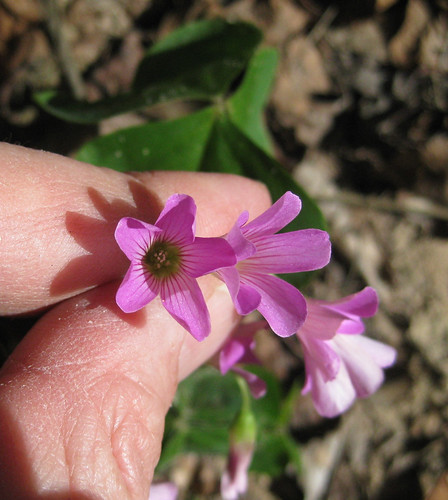

Common yard weed wood sorrel (Oxalis dillenii), often mistaken for a clover.
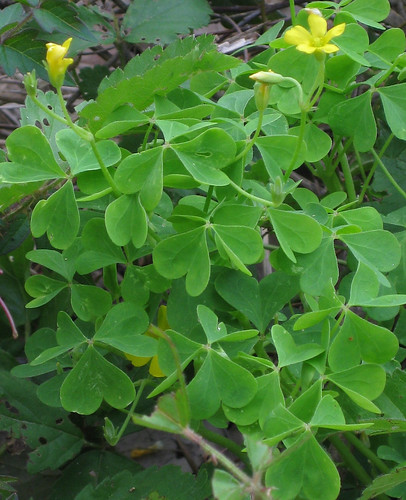
My girls love the tangy wood sorrel "bananas" or seed pods of wood sorrel.

Purple-flower, giant wood sorrel with their tubers.
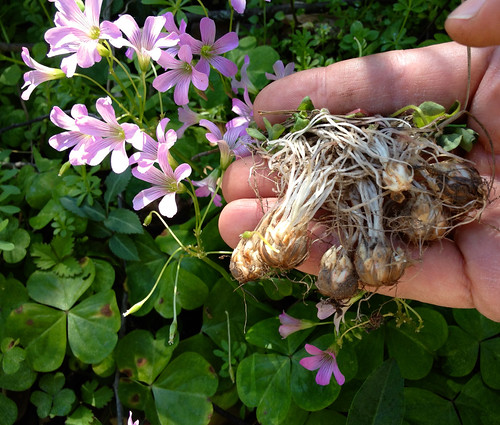
Two types of wood sorrel.
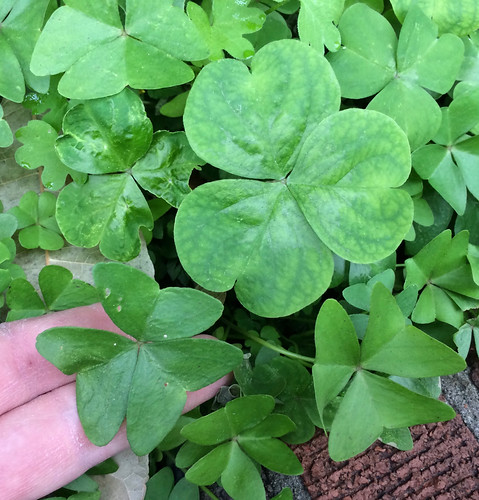
Close-up of wood sorrel tubers. Each "scale" is a thick, triangular wedge that easily break away from each other.
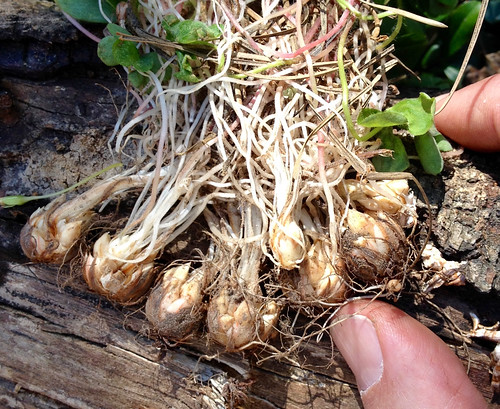
Tubers from a decorative, purple-leaf wood sorrel.
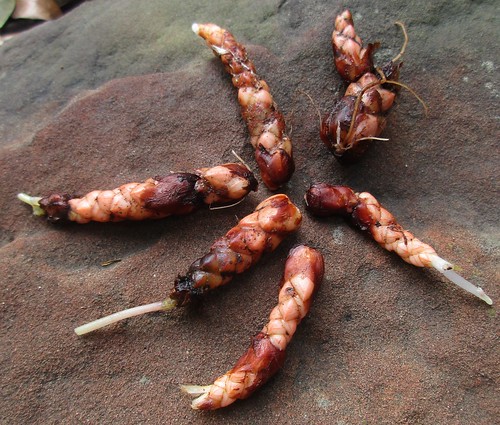
Wood Sorrel leaves (left) are heart-shaped while Clover leaves (right) are rounded.
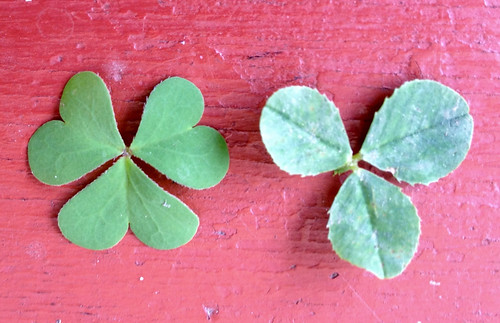
Texas distribution, attributed to U. S. Department of Agriculture. The marked counties are guidelines only. Plants may appear in other counties, especially if used in landscaping.
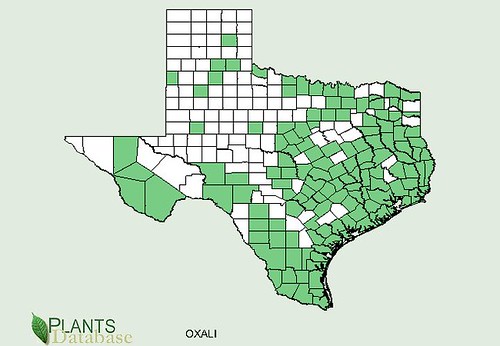
North American distribution, attributed to U. S. Department of Agriculture.
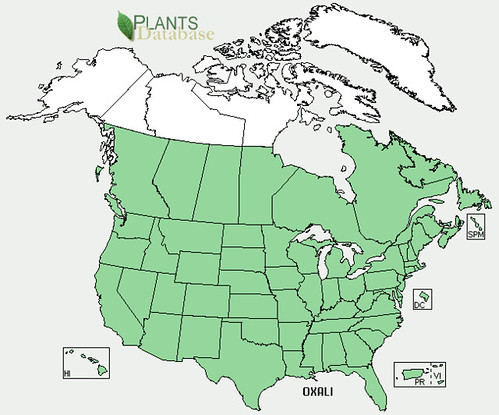
Patches of wood sorrel are very prevalent on forest floors, often near wild violets, cleavers, wild onions, etc... The three-lobed leaf looks similar to clover/shamrocks but sorrels have a cleft at the top, giving them a heart-shape whereas clovers are round or slightly pointed. Wood sorrel leaves range in size from 1/2" to almost 3" across. They have a very strong, tangy flavor that some people find too intense. It only takes a few to spice up a salad. The purplish-pink flowers can also be added to salads though mainly just for color. Wood sorrel whipped into butter makes a lemony-butter that goes great on bread, fish, and crawfish. Throw 1/2 cup of chopped wood sorrel into a can of cream of mushroom soup if you want to tick off Poland (sorry, you'll have tp take my class in person to get that full story!).
Wood sorrel tubers can be just about any color of the rainbow. They have less oxalic acid than other parts of the plants so they aren't as tangy. Their flavor is somewhat like a carrot and so that's how I use them: raw, steamed, or tossed into stews.
Excessive amounts of oxalic acid theoretically can lead to kidney stones though there's never been any actual reported case of this happening. Cautious types should be sure to drink plenty of water when eating wood sorrel. Also avoid dairy products, if possible, as the oxalic acid binds strongly to the calcium to make calcium oxalate, which is the key mineral of the kidney stones.
Buy my book! Outdoor Adventure Guides Foraging covers 70 of North America's tastiest and easy to find wild edibles shown with the same big pictures as here on the Foraging Texas website.

